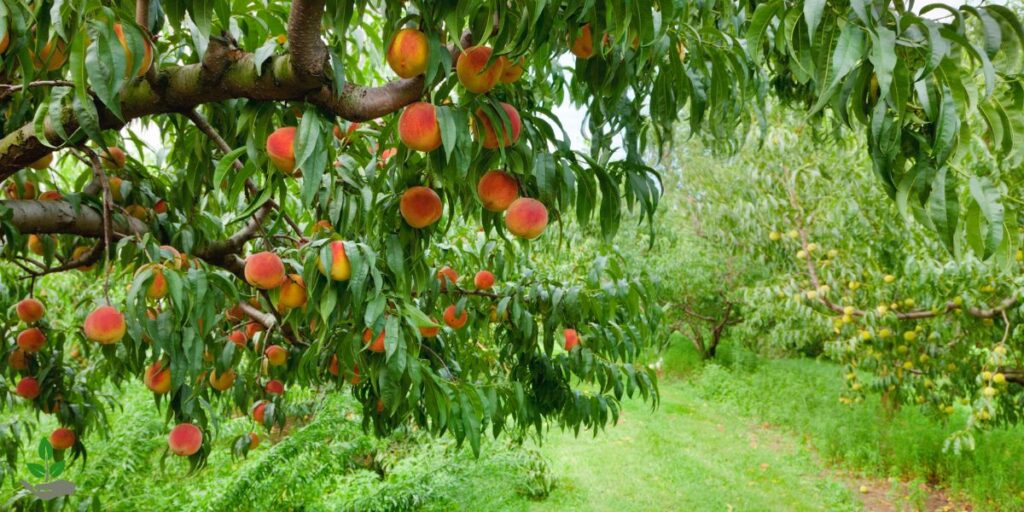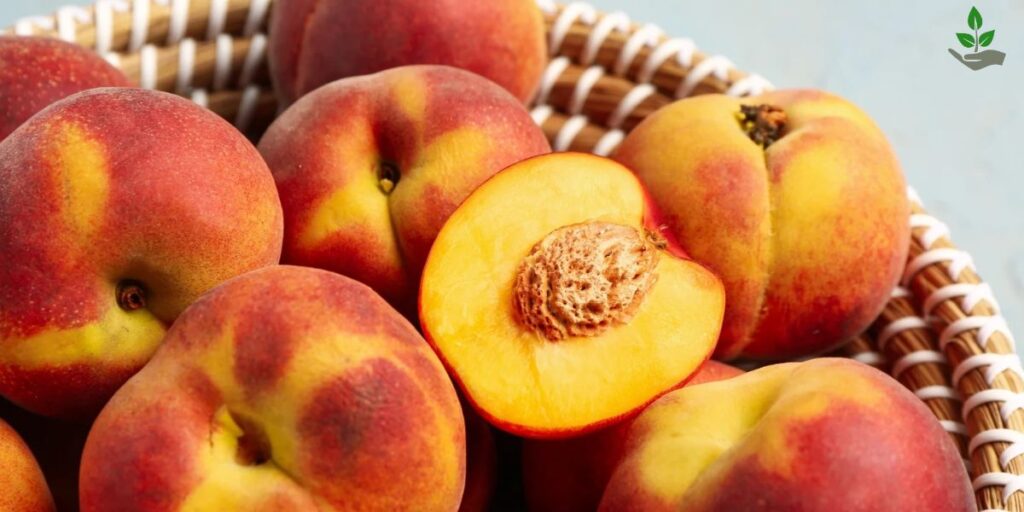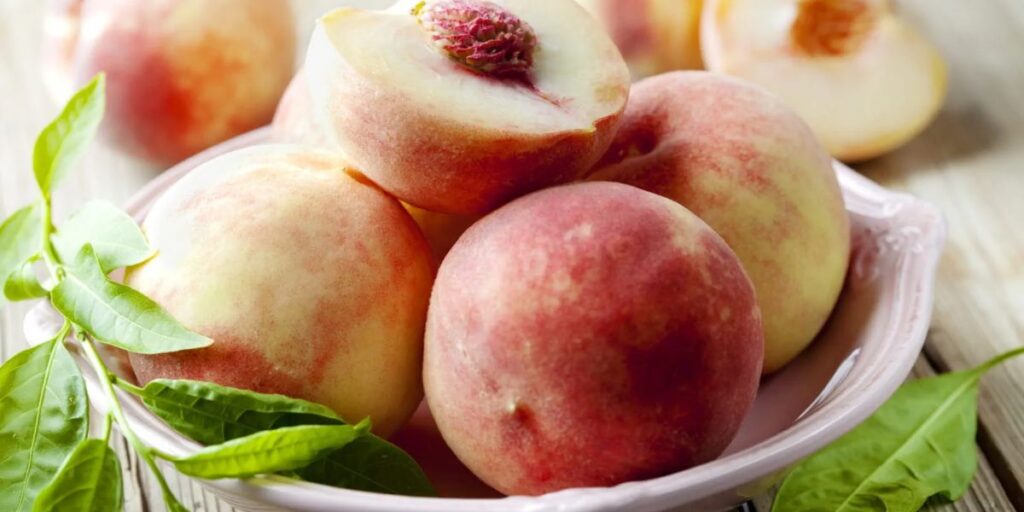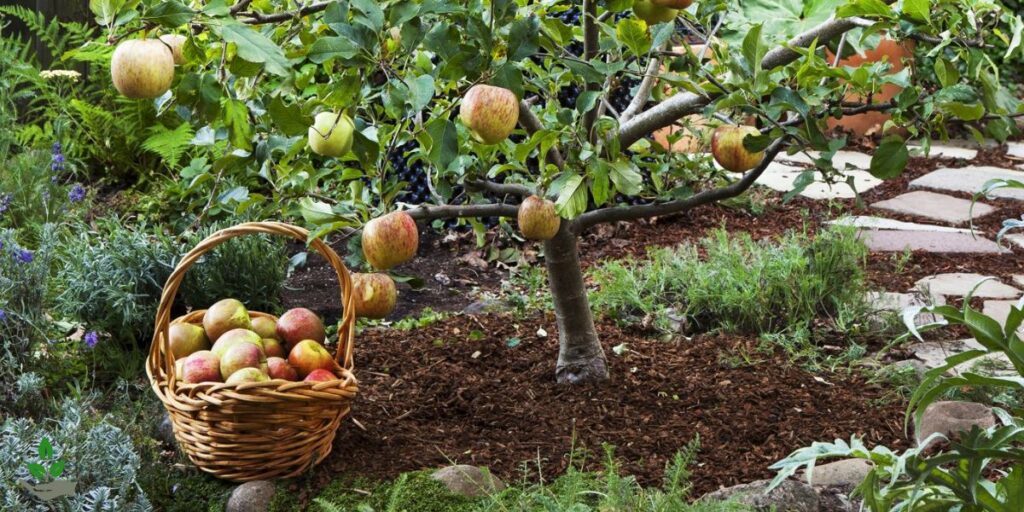Peach Tree Care, Planting, Types And Benefits
A single peach tree can produce up to 66 pounds of fruit in a single season. With their fragrant blossoms and succulent fruits, peach trees are more than just a picturesque addition to your garden, they are a source of nutrition and satisfaction. Whether you are a seasoned gardener or new to fruit cultivation, learning the art of peach tree care is key to unlocking their full potential.
This comprehensive guide will walk you through the steps of Peach Tree Care, planting, maintaining different types, and exploring the surprising benefits they bring to your garden and lifestyle. Prepare to transform your outdoor space into a fruitful paradise.
What Is A Peach Tree?
A peach tree, scientifically known as Prunus persica, is a deciduous tree native to the region of Northwest China. Renowned for its juicy and flavorful fruit, the peach tree is more than just a source of delicious summer treats, it’s a marvel of nature’s design. With its delicate pink blossoms that herald the arrival of spring, the peach tree is a symbol of renewal and hope.

These trees thrive in temperate climates, where they require a chilling period to produce fruit, adding an interesting dynamic to their cultivation. Its beautiful blossoms and tasty fruit, the peach tree has significant ecological value. It supports various pollinators, including bees, which are essential for the fruiting process.
Peach Tree History
The peach tree has a rich and fascinating history that traces back over 4,000 years to its origins in China. Revered for its sweet fruit, the peach was not only a culinary delight but also held deep symbolic meaning. This reverence paved the way for its spread to Persia, where the fruit gained popularity and adapted to diverse climates, enriching the diets and cultures of the Mediterranean regions.
In the 16th century Spanish explorers carried the peach across the Atlantic to the Americas, where it found a hospitable environment in the Southeastern U.S. The region’s warm climate and fertile soil allowed peaches to flourish, and they quickly became a staple crop, symbolizing prosperity and abundance.
Peach Tree Overview
| Common Name | Peach |
| Botanical Name | Prunus Persica |
| Family | Rosaceae |
| Origin | China |
| Height | 10 to 25 feet (3 to 7.5 meters) |
| Fragrance | Sweet, Light Fragrance |
| Toxicity | Non-Toxic |
| Life Span | 10 to 20 years |
| Leaf Colours | Green |
What are Peach Tree Types?
- Clingstone Peaches
- Freestone Peaches
- Donut Peaches
- White Peaches
- Yellow Peaches
Clingstone Peaches
Clingstone peaches have flesh that tightly clings to the pit, making them difficult to separate. They are typically used for canning, freezing, and processing due to their firm texture. These peaches are known for their sweet, juicy flavor but are less ideal for fresh eating compared to freestone varieties.

Freestone Peaches
Freestone peaches have flesh that easily separates from the pit, making them ideal for fresh eating, baking, and making preserves. They are known for their sweet, juicy flavor and smooth texture. These peaches are commonly found in grocery stores and are favored for their convenience and taste.
Donut Peaches
Donut peaches, also known as Saturn peaches, have a distinctive flat, round shape resembling a donut. They are small, with sweet, juicy, and mildly tangy flesh. This variety is known for its tender texture and unique appearance, making it a popular choice for fresh eating.
White Peaches
White peaches have a pale, delicate flesh with a sweet, low-acid flavor, making them milder and less tangy than yellow peaches. They are prized for their smooth, juicy texture and are often eaten fresh. This variety is popular in desserts, salads, and smoothies due to its sweetness.

Yellow peaches
Yellow peaches have vibrant yellow flesh with a balanced sweet and tangy flavor. They are the most common type of peach, widely used for fresh eating, baking, canning, and making preserves. Their firm texture and bright flavor make them a versatile choice in many recipes.
Read More: Mulberry Tree Care, Planting, Types And Benefits
Guide About Peach Tree
Peach trees, known for their luscious fruit and stunning blossoms, are more than just a summer staple; they symbolize warmth and abundance in many cultures. Here’s a brief guide to growing and caring for a peach tree:
Peach Tree Seeds
Peach tree seeds, or pits, are often overlooked treasures hidden within the luscious fruit. These hard stones encapsulate the potential for a vibrant new tree, but their journey to fruition begins with a crucial step, cold stratification. By refrigerating the seeds for 10-12 weeks, you mimic the natural winter conditions necessary for germination.
This process breaks down the seed’s dormancy and prepares it for planting in well-draining soil, ideally positioned in a warm, sunny spot where it can bask in the sunlight. While the allure of growing a peach tree from seed is undeniable, patience is essential.
Peach Tree Planting And Growing
Planting a peach tree is not just about choosing the right spot, it’s an opportunity to create a thriving ecosystem in your backyard. Start by selecting a location that receives full sun for at least six hours a day, as peaches thrive in warmth and light. The soil should be well-draining, ideally sandy loam, to prevent root rot while retaining some moisture.
Incorporating organic matter like compost can enhance soil fertility, providing the tree with essential nutrients that promote healthy growth. Once planted, nurturing your peach tree involves more than just watering and pruning. Consider companion planting to deter pests. Naturally herbs like basil and marigolds can repel unwanted insects while attracting beneficial pollinators.
Understanding the chilling hour requirements of your peach variety is crucial for fruit production. Some varieties need a specific number of cold hours to break dormancy and produce sweet, juicy peaches. By aligning your planting choices with your local climate and conditions, you can cultivate a bountiful harvest that not only delights your palate but also enriches your garden’s biodiversity.
Peach Tree Care
Caring for a peach tree goes beyond basic watering and pruning, it requires a nuanced understanding of its needs throughout the seasons. One often overlooked aspect is soil health, which plays a critical role in fruit quality and tree vigor. Incorporating organic matter, like compost or well-rotted manure, not only enhances nutrient availability but also improves drainage and aeration.
Regular soil testing can provide insights into PH levels and nutrient deficiencies, allowing for targeted amendments that promote robust growth. Pest management is another vital component of peach tree care, as these trees are susceptible to pests like the peach tree borer and aphids.

Implementing integrated pest management (IPM) strategies can effectively minimize damage while maintaining environmental balance. For instance, introducing beneficial insects such as ladybugs can help control aphid populations naturally. Timely applications of organic pesticides can protect your trees without harming the ecosystem.
Finally, proper pruning techniques can significantly enhance fruit production and overall tree health. Rather than simply cutting back branches, focus on shaping the tree to allow sunlight to penetrate the canopy, which is essential for fruit development. Thinning out crowded areas not only improves air circulation but also reduces the risk of fungal diseases, ensuring that your peach tree remains vibrant and productive for years to come.
What Are Peach Tree Uses And Benefits
Peach trees offer various uses and benefits, both in terms of their fruit and the tree itself:
- Peaches are widely enjoyed fresh, canned, frozen, or dried, and are used in desserts, jams, jellies, and beverages.
- Peach flesh is used in pies, cobblers, smoothies, and salads, adding a sweet, juicy flavor.
- The wood of the peach tree is sometimes used for crafting furniture or smoking meat due to its pleasant aroma when burned.
- Peaches are rich in vitamins A and C, antioxidants, and fiber, promoting skin health, immune function, and digestive health.
- The high vitamin C content in peaches supports collagen production, benefiting skin health.
- Peach trees contribute to local ecosystems by providing shade, attracting pollinators, and enriching the soil with their fallen leaves.
What Are Peach Tree Tips?
- Peach trees need at least 6-8 hours of sunlight daily for optimal growth and fruit production.
- Prune in early spring to remove dead or diseased branches and improve airflow, encouraging better fruit yield.
- Water deeply but infrequently, allowing the soil to dry out between waterings to prevent root rot.
- Use a balanced fertilizer to support growth, but avoid over-fertilizing, which can lead to excessive foliage instead of fruit.
- Keep an eye on common pests like aphids and borers, and use organic pest control methods if necessary.
What Are Peach Tree Fun Facts?
- Peaches were first cultivated over 4,000 years ago in China, where they were considered a symbol of immortality.
- The pink blossoms of the peach tree are often associated with good luck and are celebrated in various cultures.
- Nectarines are essentially a smooth-skinned variety of peach, and both belong to the same species, Prunus persica.
- Peach trees are relatively fast-growing and can start producing fruit in just 3-4 years, depending on the variety.
- Georgia, USA, is known as the “Peach State,” but China is the largest producer of peaches in the world.
Read More: Weeping Cherry Care, Planting, Types And Benefits
Conclusion
Peach Tree Care and maintenance are essential for ensuring healthy growth and abundant fruit production. By selecting the right variety suited to your climate and soil conditions, you can maximize the benefits these trees offer, including delicious fruit and aesthetic appeal.
Regular pruning, fertilization, and pest management will further enhance the vitality of your peach trees, leading to a fruitful harvest year after year. Understanding the specific needs of different peach varieties will enable you to tailor your care practices effectively. So, whether you’re a seasoned gardener or a novice, consider adding a peach tree to your landscape and enjoy the rewards of your labor.
FAQs
Can you grow a peach tree from a pit?
You can grow a peach tree from a pit, but it requires a process called stratification. The pit needs to be cracked open, and the seed must be refrigerated for 10-12 weeks before planting. Keep in mind that growing from a pit can take several years before the tree produces fruit, and the result may not be identical to the parent tree.
How long does it take for a peach tree to bear fruit?
A peach tree typically takes 3 to 4 years to bear fruit if grown from a grafted tree, and 4 to 6 years if grown from seed. The tree’s fruit production may continue for many years with proper care.
When to prune a peach tree?
Prune a peach tree in late winter or early spring while it is still dormant, before new growth begins. This helps remove dead or diseased branches and promotes healthy fruit production.
Can We Grow Peach Trees Indoor?
You can grow a peach tree indoors, but it requires a large pot, plenty of sunlight (at least 6-8 hours a day), and a well-draining soil mix. Dwarf peach varieties are best suited for indoor growth. Regular pruning, watering, and temperature control are essential for successful indoor peach tree cultivation.







